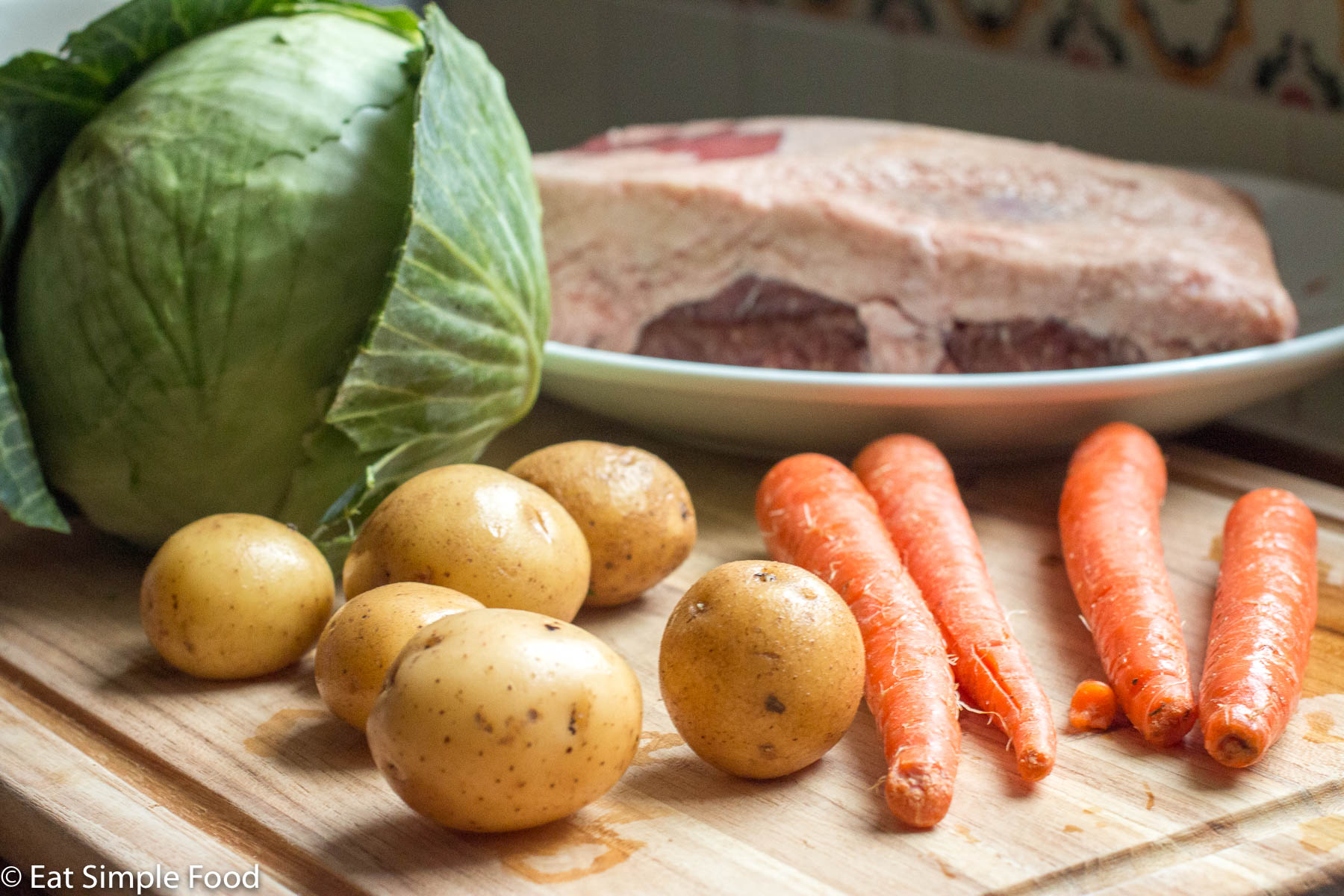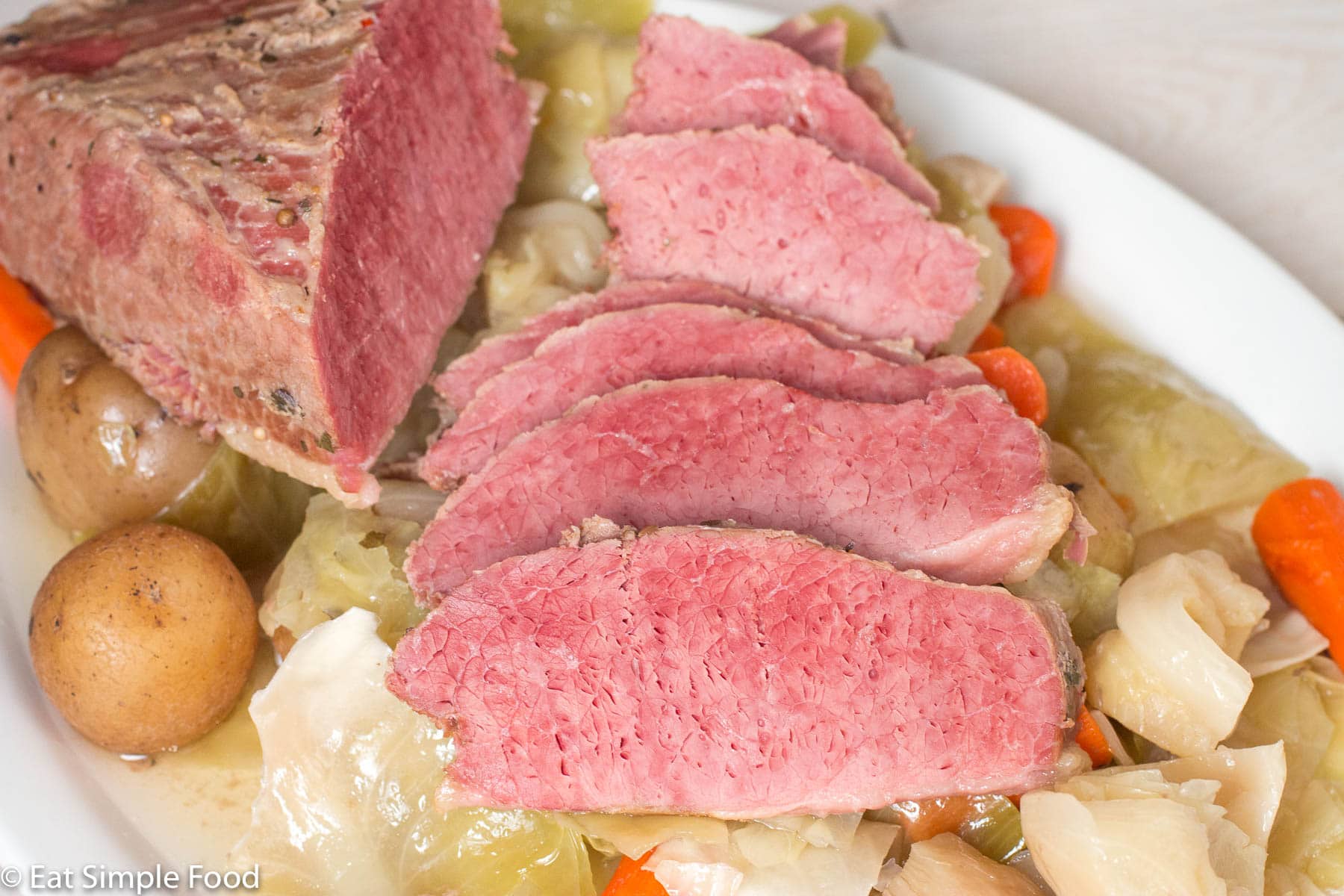Corned beef is a delicious cured and brined meat that is a staple in many households, especially around St. Patrick’s Day. When cooking corned beef, one of the most common questions is whether to place the fat side up or down in the pot or pan. There are good arguments on both sides of this debate, so let’s take a closer look at the pros and cons of each method.
Why Cook Corned Beef Fat Side Up?
Cooking corned beef with the fat side facing up has a few distinct advantages:
-
Self-Basting As the fat renders, it will baste the meat and keep it nice and moist. The rendering fat will also impart extra beefy flavor.
-
Prevents Scorching With the fat cap on top, you don’t have to worry about the meat drying out or scorching on the bottom of the pot. This can lead to off flavors.
-
Easy Fat Removal: When the corned beef is done cooking, the solidified fat will be right on top and easy to scrape off. No need to dig around the bottom of the pan.
-
Tradition: Many old recipes call for cooking corned beef fat side up. If you learned from your parents or grandparents, this may be the tried and true method.
Overall, cooking fat side up provides the juiciest, most flavorful results with little risk of scorching or overcooking the bottom of the meat. The self-basting effect is ideal when braising corned beef low and slow.
Why Cook Corned Beef Fat Side Down?
While fat side up has its advantages, there are also some good reasons to cook corned beef with the fat side facing down:
-
Prevents Drying Out: With the fat cap against the bottom of the pan, it shields the meat from direct heat that could cause it to dry out.
-
Better Browning: Allowing the meat side to face up gives you better control over browning. You can add color and crust without overcooking.
-
Crisp Fat: When the fat cap cooks against the surface of the pan or pot, it will render and become crispy. This adds texture.
-
Easier Slicing: With the fat on the bottom, slices come cleanly away from the pan instead of sticking. This makes serving easier.
Cooking fat side down is ideal for high heat searing and simmering methods. The fat shield prevents overcooking while allowing flavorful browning on the meat side.
Key Considerations
When deciding which way to cook your corned beef, keep these factors in mind:
-
Cooking Method: Braising and slow cooking favor fat side up. High heat searing and simmering work better with fat side down.
-
Cooking Vessel: Size, shape, and material (like nonstick or not) impact how heat is transferred. This affects ideal fat position.
-
Fat Thickness: Thick fat caps benefit more from fat side up for self-basting. Thinner fat can go either way.
-
Personal Preference: If you like crispy fat or easy slicing, go fat side down. For braising and shredding, fat up may be better.
The good news is that corned beef turns out moist and delicious either way. Pay attention to your specific cooking method, vessel, and personal preferences to decide which way up works best. For most braising, simmering, and slow cooking methods, fat side up is ideal. But searing in a skillet or Dutch oven favors starting with the fat side down. Regardless of your choice, always let the cooked corned beef rest before slicing for best results.
/corned-beef-2500-56a2100e5f9b58b7d0c62a35.jpg)
How Do You Cook Corned Beef and Cabbage In The Crockpot?
It generally takes around 7-9 hours on low to cook corned beef brisket in a crockpot.
- Add the onion, potatoes, and carrots into a large crockpot (at least 6 quarts)
- Nestle in the corned beef with the fat side up with pickling spice.
- Pour the water or chicken broth over the top. If the broth does not almost cover the brisket, add enough water to come half way up the beef.
- Cook on low for 7-9 hours or until tender.
- Add the cabbage to the crockpot around hour 6-7 (2 hours before serving). Sometimes there is not enough room for the cabbage to fit in the crockpot. If this happens, bring a large pot of water to a boil, throw in the cabbage, and cook for ~ 7-9 minutes or until it has shrunk. Strain and add to crockpot.
- Remove the brisket, let cool, and slice across the grain. Salt to taste.

Corned Beef Brisket FAQS
Nope! But it does need to have liquid half way up the meat. If its completely covered it will end up boiled. Not the end of the world, but just not necessary.
Yup. Thats the pickling spice and you definitely want all that flavor in there when you cook it!
It takes 7-9 hours on low to cook corned beef in the crockpot. It will be fork tender when its done. Crockpots cook at different heats, even on low, check it at hours 7 and 8.
Cook corned beef in the crockpot for 7-9 hours on low.
Its hard to say because some corned beef briskets have an uber salty pickling liquid or spices. Use water if you are sensitive to salt and add salt to taste later.
Corned beef can be either pink when fully cooked or grey / brown. There is one key difference in that the cooked Corned Beef that is pink in color has the addition of nitrates – either sodium nitrate or saltpeter (potassium nitrate). The nitrate additions cures the corned beef and changes the color of the meat to pink and also gives corned beef its flavor. The lack of curing the corned beef with nitrates leaves the corned beef the regular ole color of cooked beef.

Mistakes Everyone Makes When Cooking Corned Beef And Cabbage
FAQ
Do you cook corned beef fat side up or down?
Do you put corned beef fat side up or down? Whether you’re baking or boiling corned beef, it should be placed fat side up. When it’s baked, this allows the fat to melt through/over the meat while it cooks and keeps it nice and juicy while adding flavor.
Is it better to cook brisket fat side up or fat side down?
Yes, in the oven you should cook your beef brisket fat side up. When oven roasting the brisket, fat side up helps keep the top of the meat nice and tender with a slightly crunchy crust on the top.
What is the best method for cooking corned beef?
The USDA recommends simmering corned beef on the stovetop for 1 hour per pound of meat.Feb 28, 2024
Do you cook beef with the fat side up or down?
Cook it fat side up. Roast the beef with the thin, fat cap facing up. This helps the fat render and distribute throughout the rest of the meat, giving you extra tender and juicy beef.
